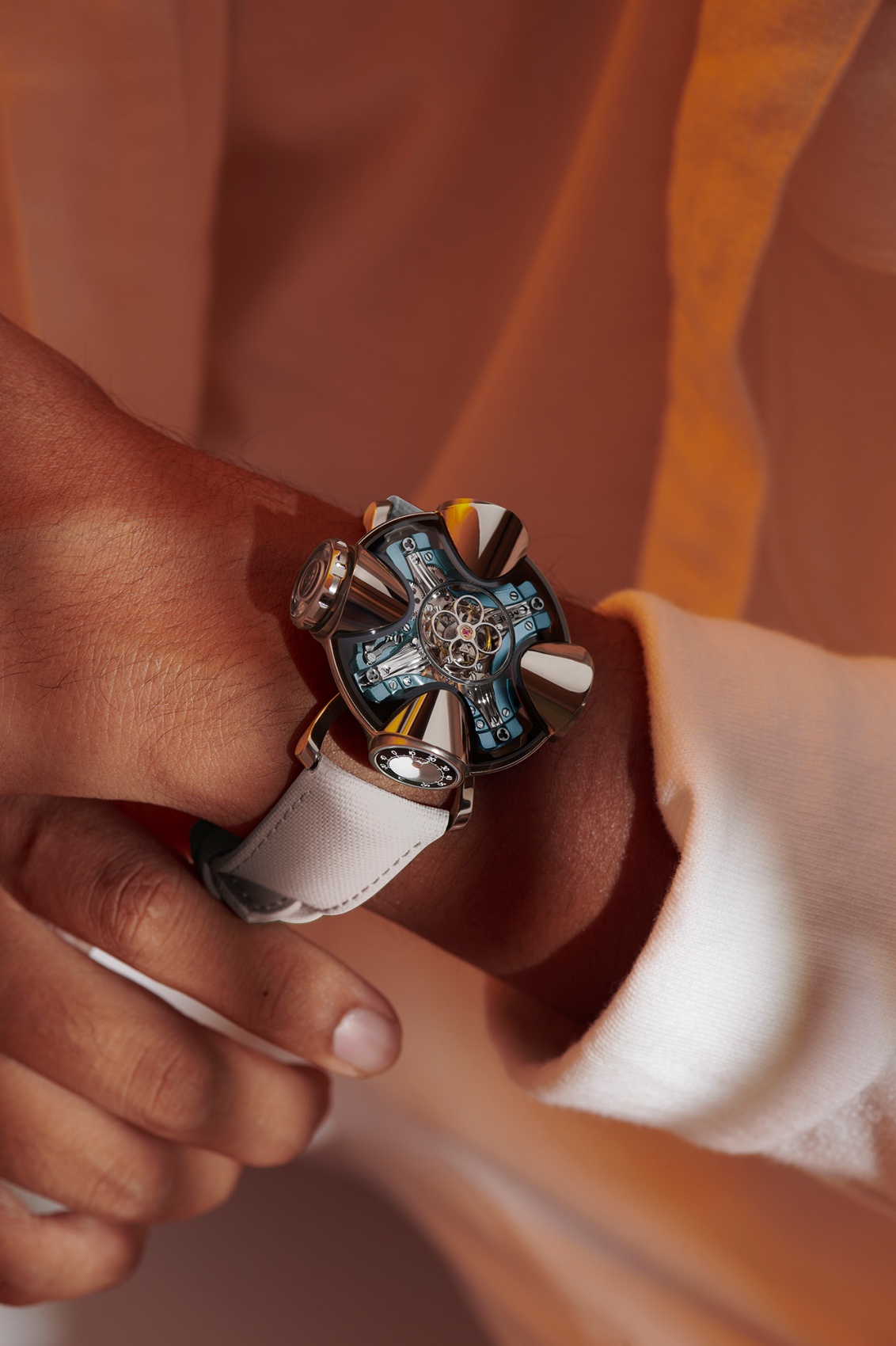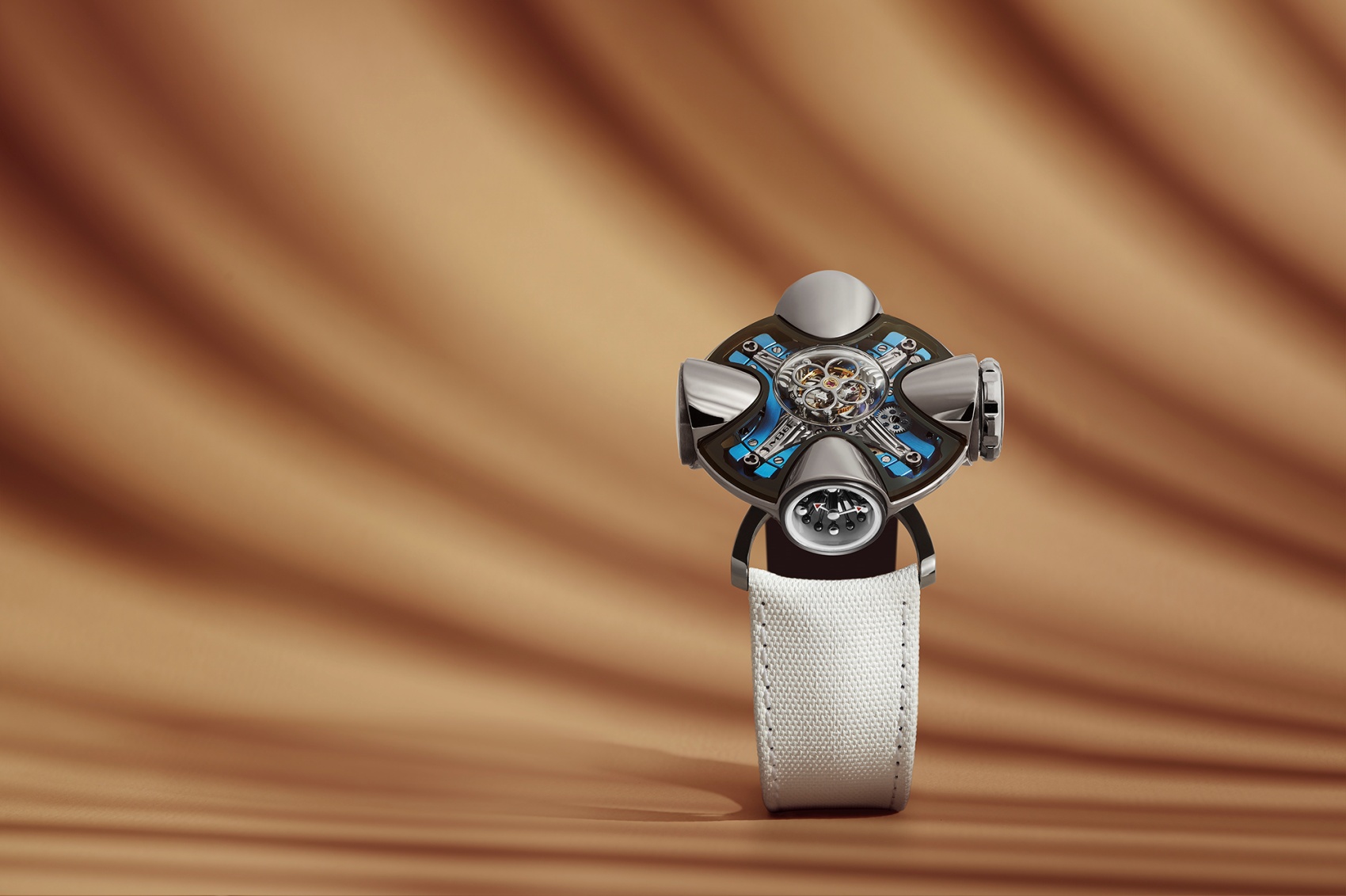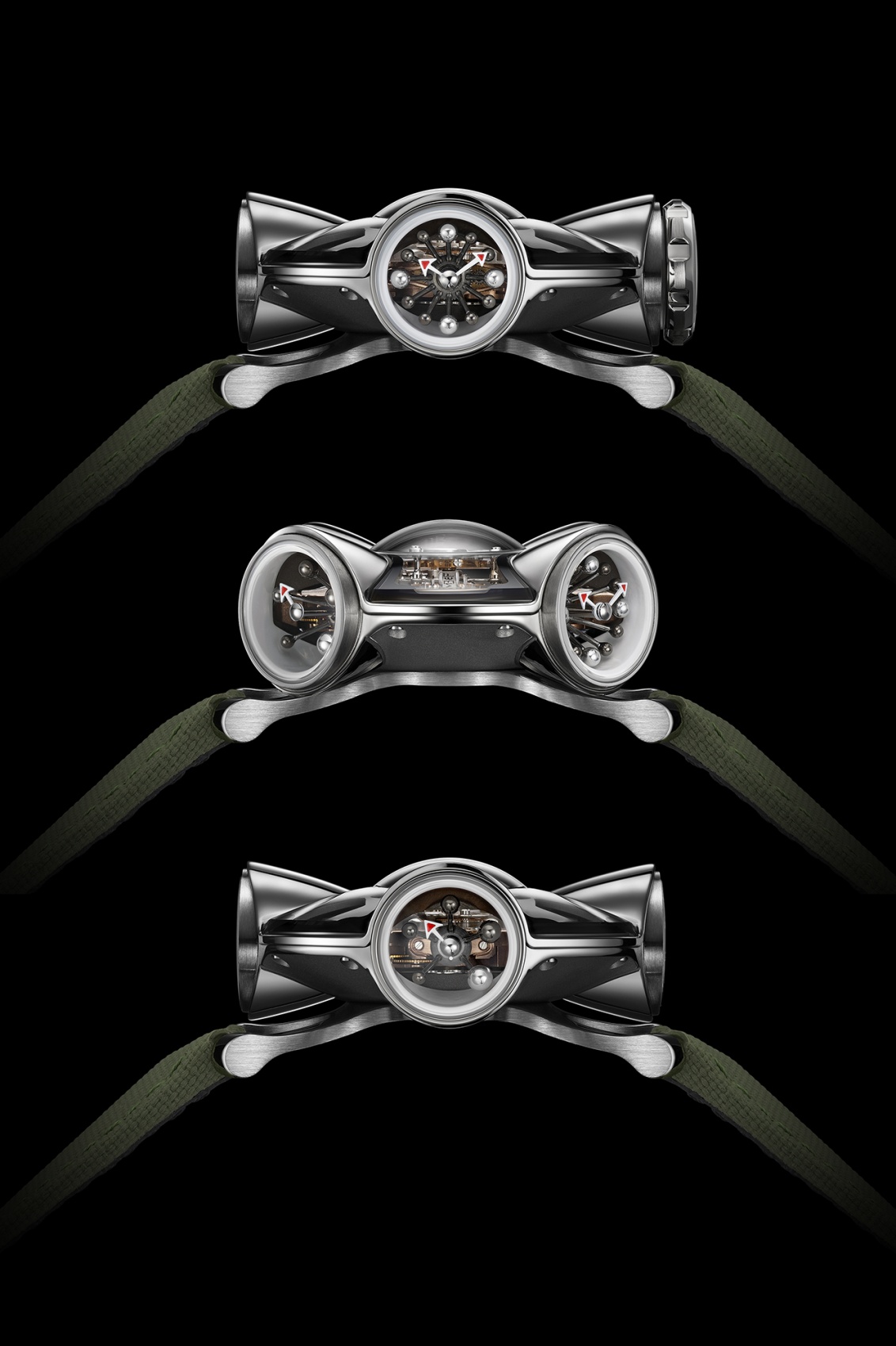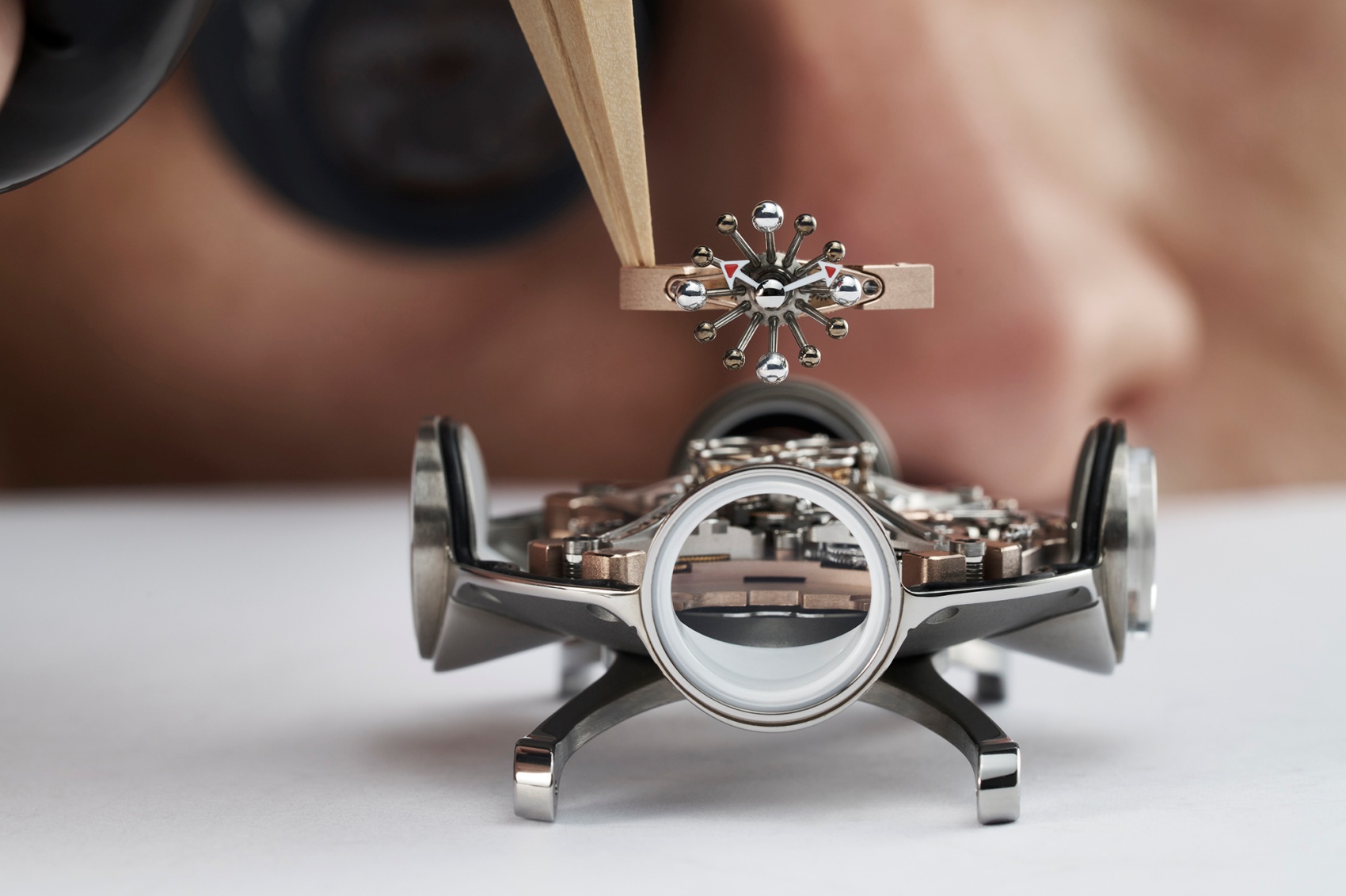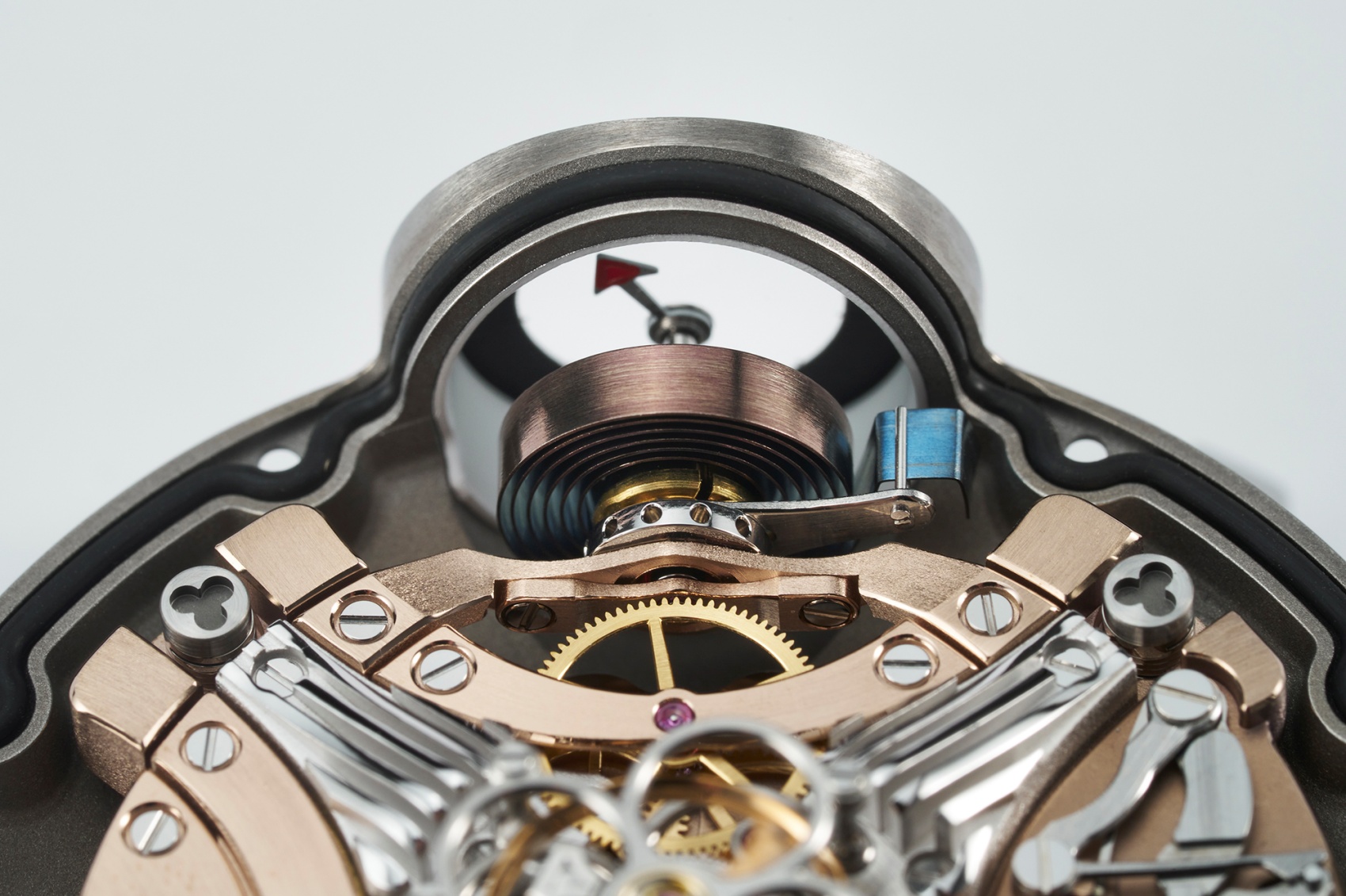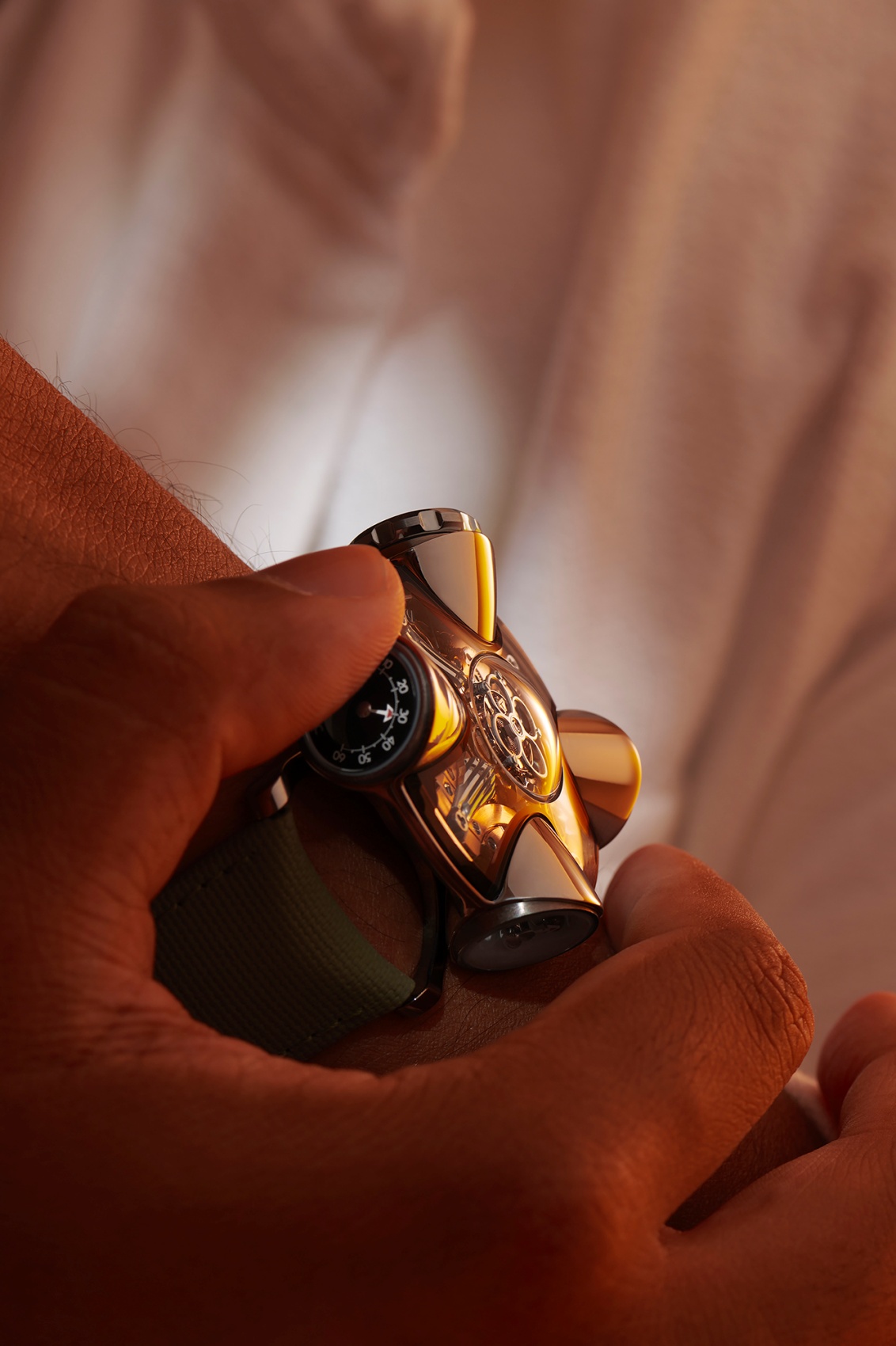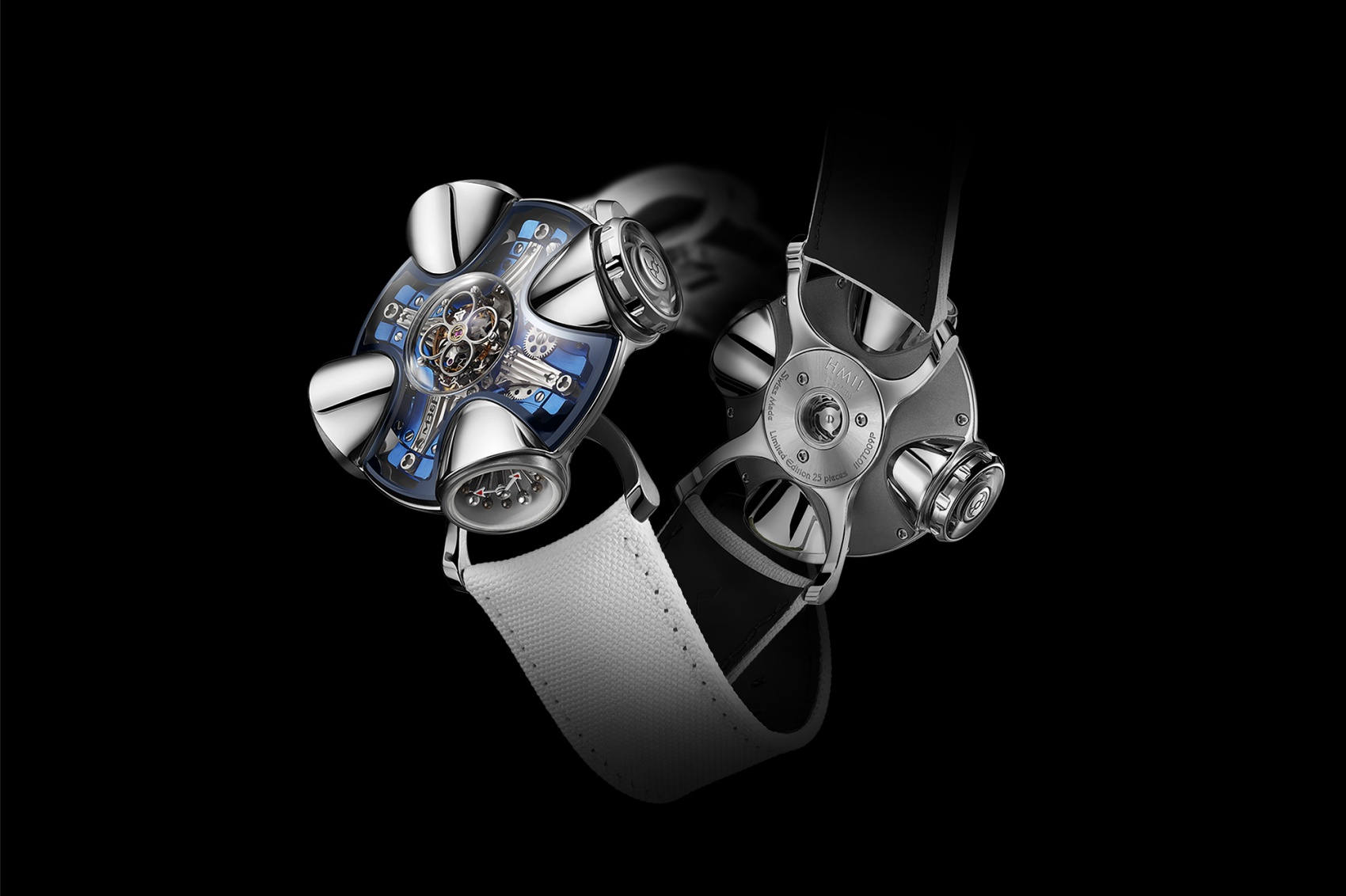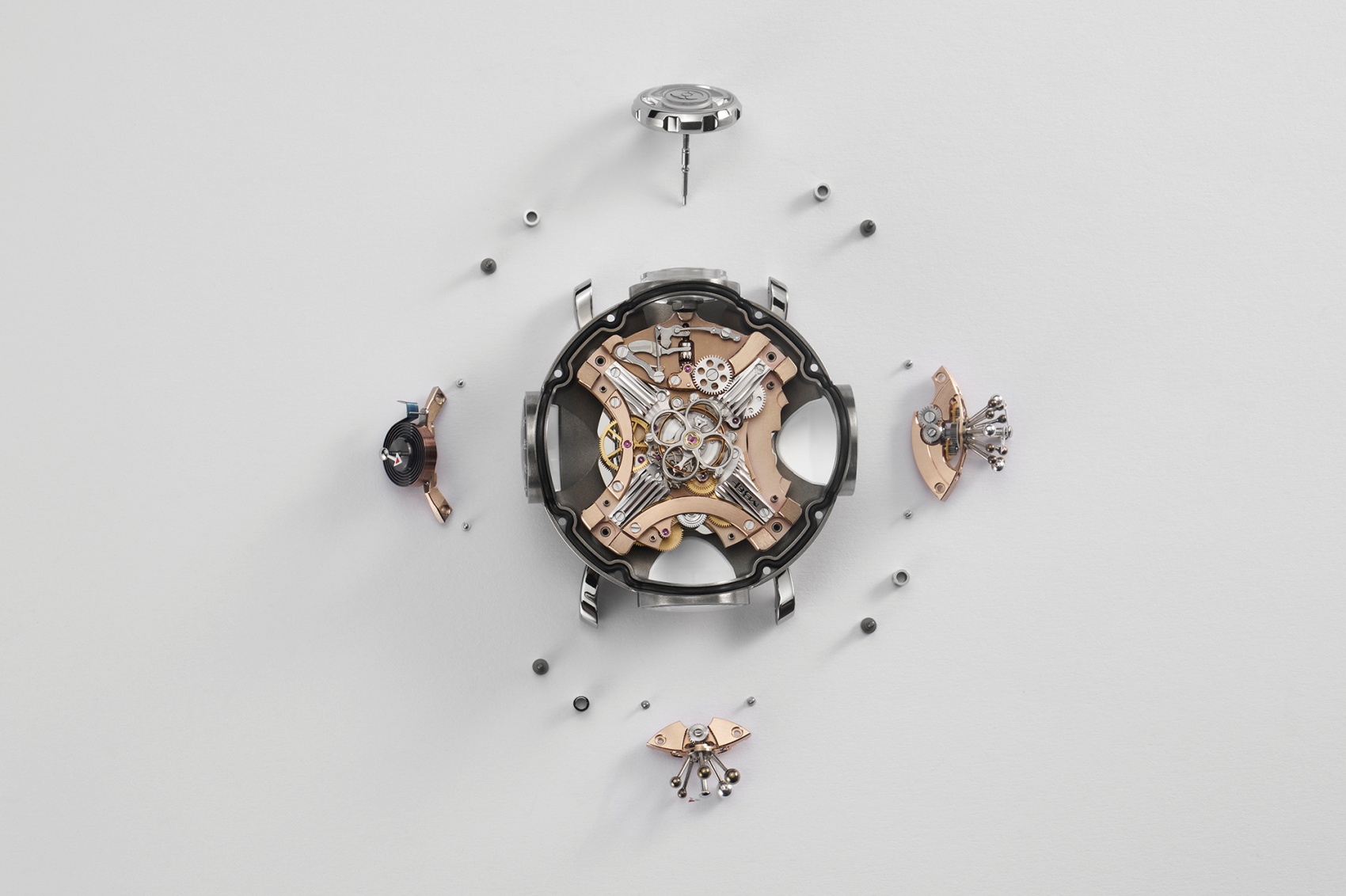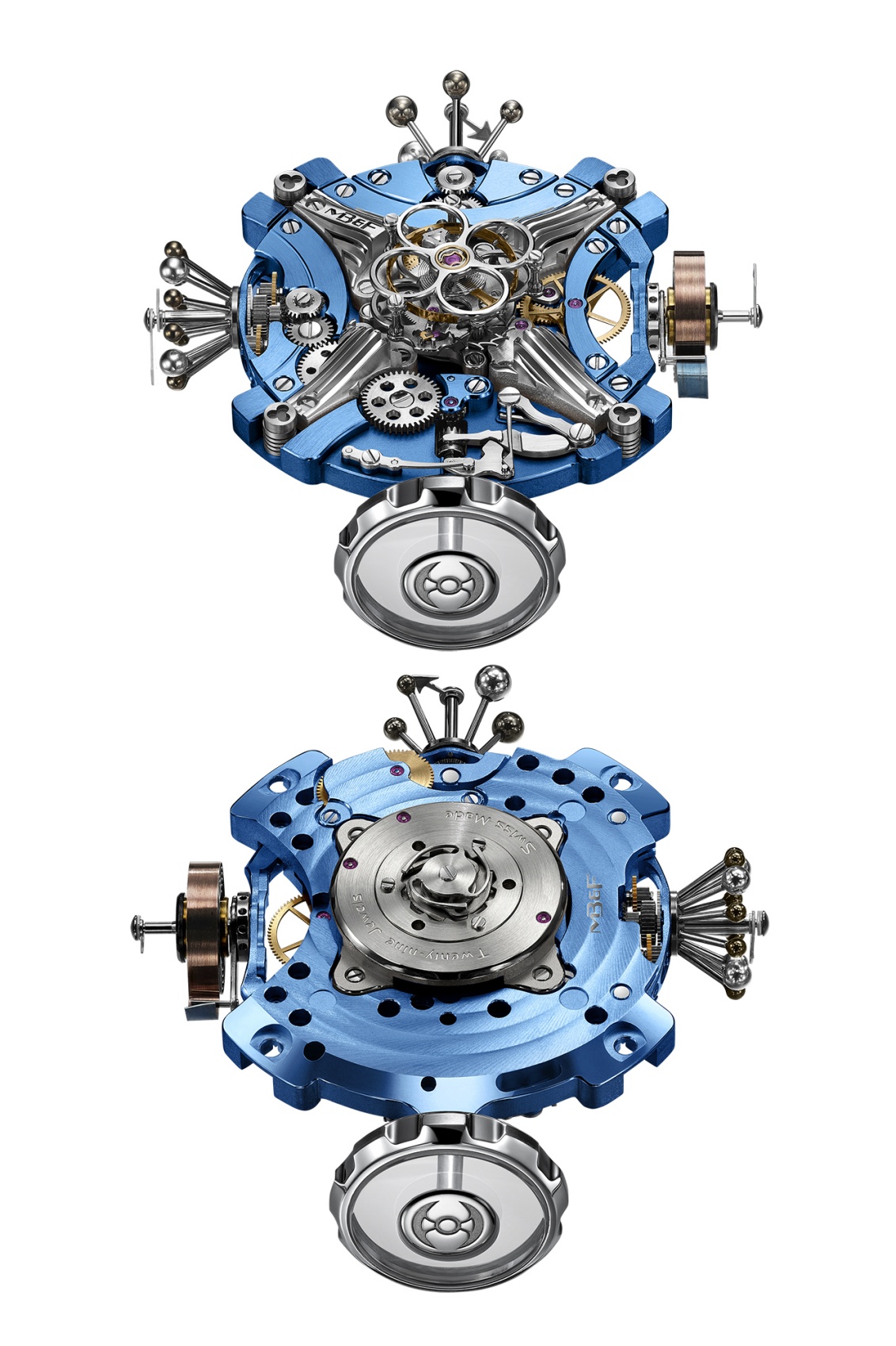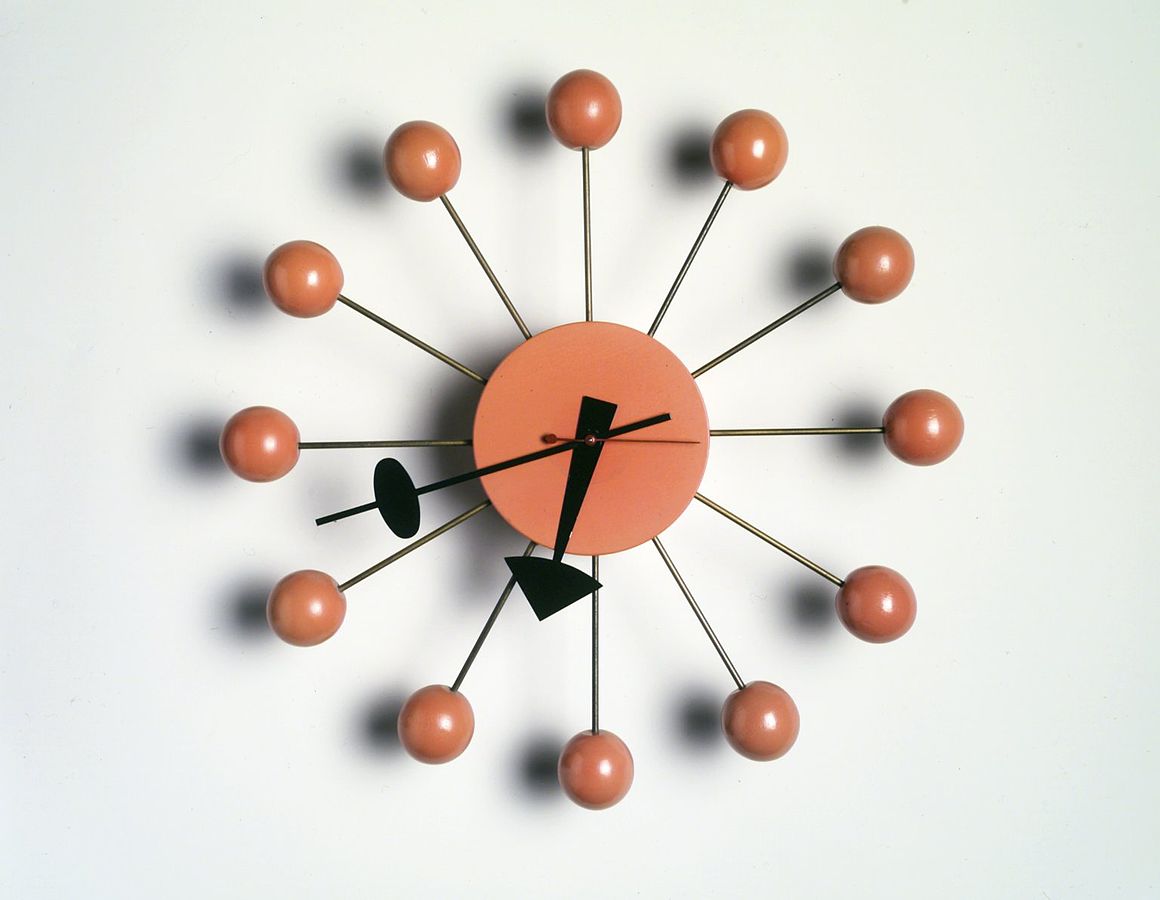Swiss-based MB&F is a brand that has been creating increasingly bold luxury watches for several years. Maximillian Büsser’s designs are experiments, trying to create new approaches in the industry. The MB&F HM11 Architect is a machine-like watch, following the thoughts of Le Corbusier. Just as the architects of the 1960s experimented with the form of buildings, Büsser is experimenting with the ‘little machine’.
The appearance of the HM11 is the result of an attempt to recreate the futuristic forms of architecture in a watch. The watchmaker explains that the watch is a futuristic house, referring to the architectural experiments of the decline of modernism. For the eminent architect Le Corbusier, the house was a living machine inhabited by a human being. A house is not just walls, it is a complex ingenious machine and the same is true of a watch. Although such a translation is rather convoluted, it is possible that Büsser is right about his work.
The tourbillon mechanism at the centre of the watch is also the centre of the ‘house’. The glazed centre refers to the atrium of the building. From the dome made of sapphire glass diverge four parabolic ‘rooms’. They are made of titanium and it is from inside them that the time and other values can be read. In one of these chambers is an element consisting of 12 metal balls on rods, which are in fact the dial of the watch. The ball dial is reminiscent of the well-known George Nelson-designed Ball Clock of the 1940s, and the second chamber houses the power reserve indicator, made in a similar fashion to the dial of the watch. A full winding of the mechanism allows the HM11 to run for 96 hours, or 4 days.
The crown of the watch needs to be turned 10 times for full winding. In comparison, a standard watch needs 30 turns, which translates into 48 hours of running time. The crown itself is quite a complicated mechanism. In the HM11, it is five times longer than a standard one, making it necessary to fit additional gears. The crown chamber is the third “room”. Finally, the last room is dedicated to the mechanical thermometer, which indicates the temperature between -20 and 60 degrees Celsius. Each of the chambers is driven by a different mechanism at the centre of the watch.
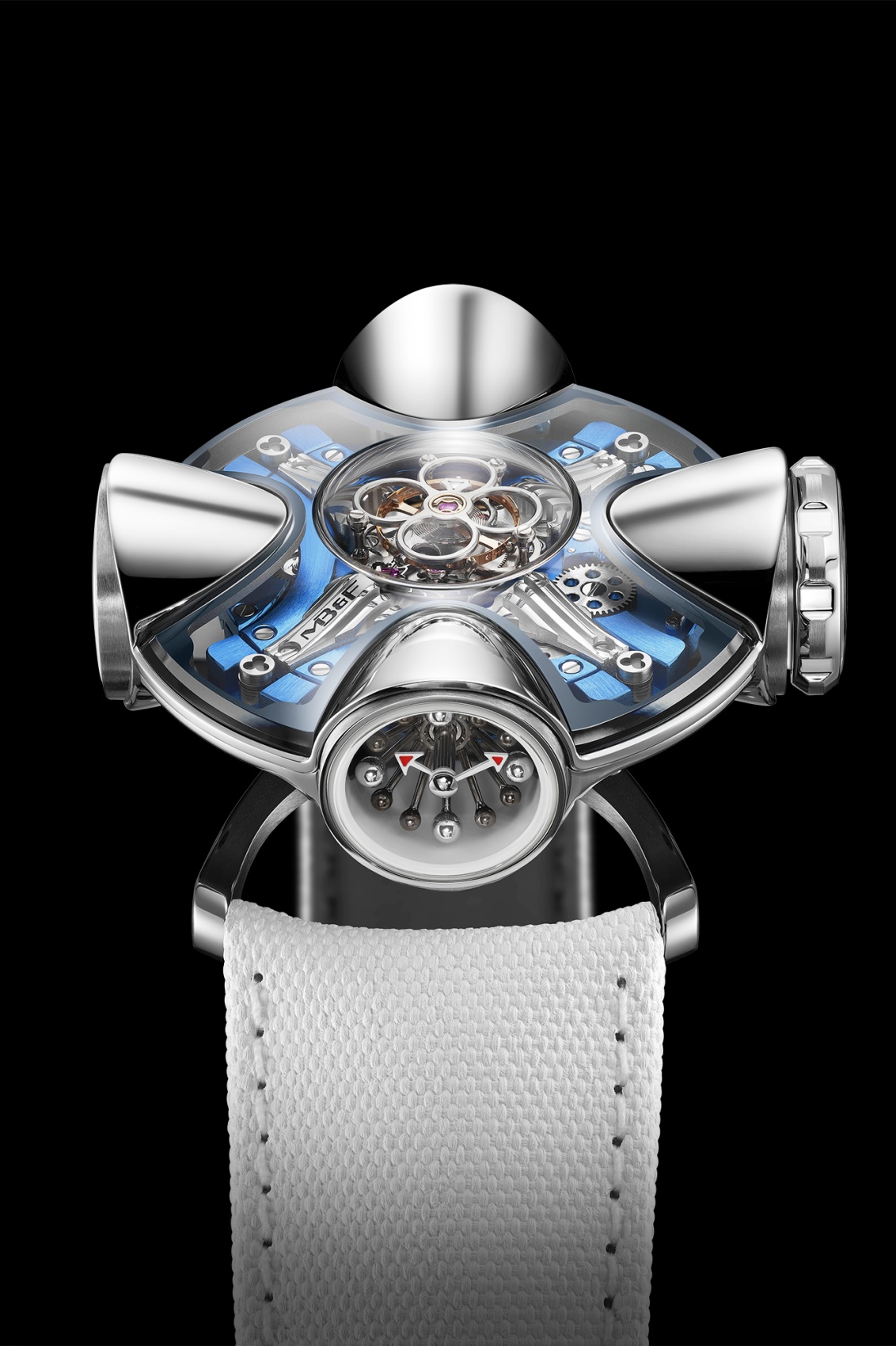
The central mechanism of the watch is the so-called tourbillon. A mechanism whose movements resemble the vortex of a whirlwind. This arrangement ensures that the operation of the watch is not disturbed by the negative effect of gravity on the mechanism. Also unusual is the fact that the mechanism protrudes above the surface of the watch, instead of hiding behind the classic dial. I wrote more about a similar solution in an article about the Hublot MP-15 Sapphire watch, which you can read HERE.
The metal envelope is made of titanium and can be rotated horizontally. The overall design resembles not so much a house as a spaceship. Büsser encapsulated his love of 1960s design in a 42 mm wide watch. MB&F has priced the HM11 Architect watch at $230,000.
MB&F is a young brand, but led by an experienced watchmaker. Maximillian Büsser honed his skills at the atelier of the prestigious Jaeger-LeCoultre and Harry Winston brands. In 2005, he stepped down as president of Harry Winston luxury watches and set up his own atelier. The watchmaker wanted each watch to be created with the help of experienced and ambitious specialists. That is why he invited the best from all over the world to join his designs. This is also why the full name of the brand is Maximillian Büsser & Friends.
Source: MB&F
Photos: Fabien Nissels
Read also: Interesting facts | Switzerland | Titan | Architecture | whiteMAD on Instagram

